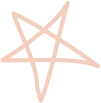Why Early Bilingualism Matters
As parents, we strive to provide our children with the best possible opportunities for growth and development. One way to do this is by introducing them to a second language. Early exposure to a second language can have numerous cognitive, social, and academic benefits.
Why Start Early?
Young children are remarkably adept at language acquisition. Their brains are incredibly flexible and possess an innate capacity for absorbing new information. This “critical period” for language learning, as described by neuroscientists such as Eric Lenneberg (1967), makes early childhood the ideal time to introduce a second language.
Research has shown that early language learning can lead to a multitude of benefits, including:
- Improved Cognitive Skills: Studies have consistently shown that bilingual children often exhibit enhanced cognitive abilities. They tend to have better problem-solving skills, improved critical thinking, and increased creativity. For instance, a study by Bialystok (2009) found that bilingual children outperform monolingual children on tasks that require executive function, such as attention, inhibition, and cognitive flexibility. These enhanced cognitive skills can have a significant impact on various aspects of a child’s development.
- Enhanced Cultural Awareness: Learning a second language fosters empathy, understanding, and appreciation for different cultures. It helps children develop a broader worldview and a deeper understanding of the interconnectedness of the human experience.
- Better Academic Performance: Bilingualism has been linked to improved academic performance, particularly in areas such as language arts and mathematics. Bilingual children often demonstrate stronger cognitive flexibility, which can translate to better academic outcomes across various subjects. For example, a study by Genesee (1989) found that bilingual children often outperform monolingual children on tasks that require metalinguistic awareness, such as identifying grammatical errors.
The Benefits of Immersion and Play
One of the most effective approaches to second language learning for young children is through immersion. This involves creating an environment where the target language is used naturally and consistently.
At Step by Step Nursery, we prioritize a comprehensive approach to second language learning by incorporating:
- Native-speaking educators: Our nursery employs qualified native-speaking teachers who provide authentic language exposure and create a rich and immersive learning environment.
- Immersive Learning Environment: We strive to create a language-rich environment where children are encouraged to use the second language in everyday activities, such as during playtime, mealtimes, and story time.
- Play-Based Learning: We believe that learning should be fun and engaging. Our curriculum incorporates a variety of play-based activities, such as games, songs, and art projects, to make language learning enjoyable and meaningful.
- Songs, Stories, and Rhymes: We utilize a rich repertoire of songs, stories, and rhymes in the target language to enhance vocabulary, improve pronunciation, and foster a love of language.
How You Can Support Second Language Learning at Home
While a structured learning environment is crucial, parental support plays a vital role in a child’s language development journey. Here are some practical tips for supporting second language learning at home:
- Make it a Part of Everyday Life: Even if you’re not fluent, try to incorporate the second language into your daily routines. Simple phrases like “good morning,” “please,” and “thank you” can go a long way. You can also label objects around the house in the target language. Consistent exposure, even in small doses, can significantly impact your child’s language acquisition.
- Read Aloud Together: Introduce your child to a diverse collection of books in the target language. Look for books with vibrant illustrations, engaging stories, and simple vocabulary. Reading aloud together not only exposes your child to the language but also fosters a love of reading and strengthens your bond.
- Sing and Dance Along: Singing familiar songs and rhymes in the target language is a fantastic way to introduce your child to music, rhythm, and pronunciation. You can find many children’s songs and nursery rhymes in various languages online.
- Embrace Cultural Experiences: If possible, travel to countries where the target language is spoken. This provides an invaluable opportunity for your child to experience the language in a real-world setting. Even if traveling abroad isn’t feasible, you can explore different cultures through food, music, and local festivals in your community.
Research on Bilingualism
CHILD DEVELOPMENT
Key Finding: Early childhood is the ideal time to introduce a second language.
COGNITIVE DEVELOPMENT
Key Finding: Bilingual children often outperform monolingual children on tasks that require metalinguistic awareness, such as identifying grammatical errors.
Key Finding: bilinguals appear to perform better than monolinguals on tasks that involve switching between activities and in certain aspects of memory, for example generalizing information from one event to a later event
MEDIA VS SOCIAL INTERACTION
Key Finding: Opportunities to interact with multiple different speakers has been linked to vocabulary learning in bilingual toddlers
Key Finding: low-quality television viewing in infancy has been linked to smaller vocabulary sizes in bilingual toddlers
- Do babies learn from baby media? and
- Foreign-language experience in infancy: Effects of short-term exposure and social interaction on phonetic learning
Key Findings: High quality language exposure involves social interaction—infants do not readily learn language from television



